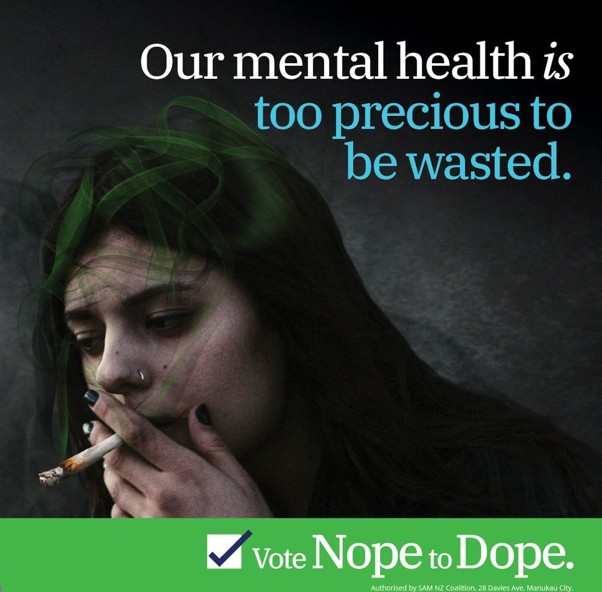
Radio NZ News 15 October 2020
Our additional comment: These sorts of stories cause serious concern for Aaron Ironside, who leads the Say Nope to Dope campaign opposing legalisation. He does not think an age limit on purchase will stop kids from trying it, as is the case with current alcohol laws. Ironside said when the brain is developing, you do not want to be using substances that could impact on that development. “The risk of psychosis, the risk of cannabis use disorder, is four times higher for adolescent use, but also it’s in the flow-on effects of poor educational outcomes which in turn lead to poor employment outcomes.”
Anti-cannabis campaigners say the minimum age of 20 to use and purchase weed wouldn’t stop young people from feeling the harm of legalisation.
Marijuana can halt motivation for young people, leading to them dropping out of school and stunting their development, and it can cause mental health issues like psychosis.
But those issues are already happening in New Zealand, and international examples show Canada’s youth usage rates dropped after legalisation.
Diana Ranger has seen the worst of cannabis use in young people.
Her nephew was forced to take the drug by a gang when he was 10, and she said he suffered from psychosis as a result.
“He was going in and out sanity and insanity, and he bit me right through the arm,” Ranger said. “I didn’t know a human could break the skin and leave actual bite marks.
“Then he’d recover, and he’d lose his mind again. He’d shove his fist right through windows.
“It took all night with the help of one of my sons to recover.”
Ranger said that happened 40 years ago, and the man is still feeling the effects today.
These sorts of stories cause serious concern for Aaron Ironside, who leads the Say Nope to Dope campaign opposing legalisation.
He does not think an age limit on purchase will stop kids from trying it, as is the case with current alcohol laws.
Ironside said when the brain is developing, you do not want to be using substances that could impact on that development.
“The risk of psychosis, the risk of cannabis use disorder, is four times higher for adolescent use, but also it’s in the flow-on effects of poor educational outcomes which in turn lead to poor employment outcomes.”
Ironside said he is also concerned about the second-hand impact of smoking cannabis.
“We’re very concerned to read this study that suggested up to 50 percent of the children, in this particular study, where they were inhaling second-hand cannabis smoke, had THC in their urine,” Ironside said.
“We’ve heard from many teachers who can give first hand accounts of the children who come from homes where cannabis is being used, that the children are clearly affected, clearly unable to engage in a days schooling in the same way that their classmates are able to.”
That study included 83 children, and was conducted in Colorado.
Ironside also pointed to a study which showed children exposed to second-hand cannabis smoke may be 80 percent more likely to suffer adverse outcomes.
That study, conducted in California, included 29 children who had been exposed to cannabis.
READ MORE: https://www.rnz.co.nz/news/political/428371/cannabis-age-limit-won-t-reduce-harm-in-young-people-campaigners-say

